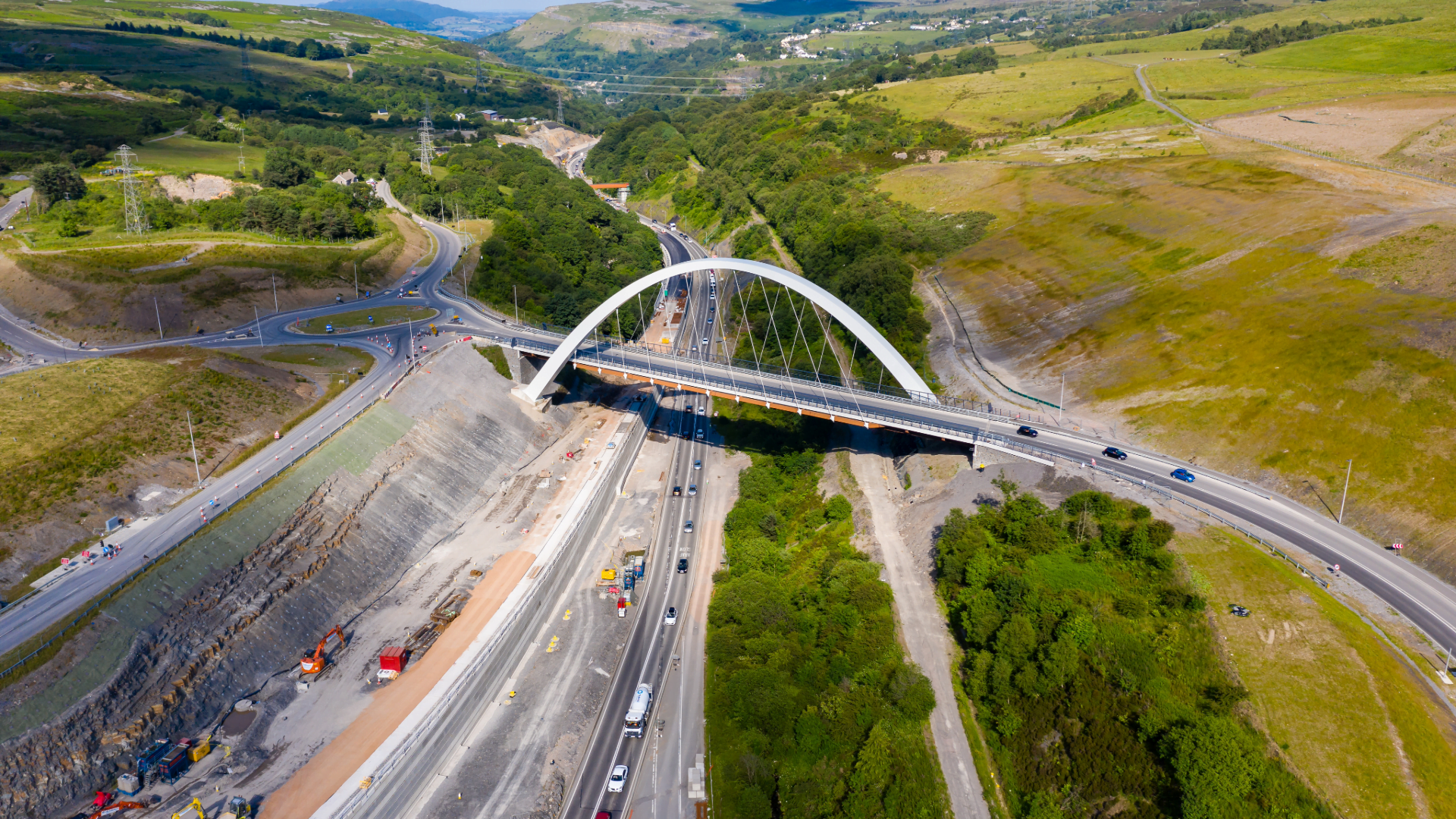Infrastructure: Integrating Technology for Smart and Sustainable Development is the backbone of modern society, encompassing the critical systems and facilities that support our daily lives. From transportation networks and utility systems to communication frameworks and public buildings, infrastructure plays a vital role in economic growth, social development, and environmental sustainability. As we move towards a more interconnected and technologically advanced world, the integration of cutting-edge technologies such as Artificial Intelligence (AI), the Internet of Things (IoT), and renewable energy solutions is transforming the way we design, build, and manage infrastructure. This blog explores the future of infrastructure, focusing on the integrating of technology for smart and sustainable development.
1. The Evolution of Infrastructure
Historical Perspective
The concept of infrastructure has evolved significantly over the centuries. Early civilizations built rudimentary roads, bridges, and aqueducts to support trade and transportation. The industrial revolution brought about the development of railways, electricity grids, and urban sewage systems, laying the foundation for modern infrastructure. In the 20th century, the advent of automobiles, airplanes, and telecommunication networks revolutionized transportation and communication.
Modern Infrastructure
Today’s infrastructure is characterized by complex networks of roads, railways, airports, seaports, power plants, water supply systems, and telecommunication networks. These systems are designed to meet the needs of growing urban populations and support economic activities. However, traditional infrastructure faces challenges such as aging facilities, increasing demand, and the need for sustainability.
The Role of Technology
Technology is driving a paradigm shift in infrastructure development and management. Innovations in AI, IoT, and renewable energy are enabling the creation of smart infrastructure that is more efficient, resilient, and sustainable. These technologies are transforming traditional infrastructure into intelligent systems capable of real-time monitoring, predictive maintenance, and adaptive management.
2. Smart Cities: The Integration of Technology in Urban Development
Definition and Objectives
Smart cities leverage technology to enhance the quality of life, improve operational efficiency, and promote sustainability. The objective of smart cities is to create urban environments that are responsive, adaptive, and sustainable, ensuring the well-being of residents while optimizing resource use.
Key Components of Smart Cities
- Smart Transportation: AI-powered traffic management systems, autonomous vehicles, and integrated public transit networks.
- Smart Utilities: Energy-efficient power grids, water management systems, and waste recycling solutions.
- Smart Buildings: Energy-efficient designs, automated control systems, and IoT-enabled appliances.
- Public Safety: AI-driven surveillance systems, emergency response management, and disaster prediction tools.
Case Studies
Singapore: The Smart Nation initiative in Singapore uses AI to manage traffic, monitor public health, and enhance urban planning. Smart sensors and data analytics optimize resource allocation and improve the quality of life.
Barcelona: Barcelona’s smart city strategy includes AI-driven energy management, waste collection, and public transportation systems. The city has implemented smart lighting and environmental monitoring to reduce energy consumption and improve air quality.
San Francisco: AI is used in San Francisco for traffic management, emergency response, and environmental monitoring. The city has implemented smart parking systems and electric vehicle charging stations to promote sustainable transportation.
3. The Impact of AI on Infrastructure
AI in Transportation
AI is revolutionizing transportation systems by enhancing efficiency, safety, and user experience.
Traffic Management: AI algorithms analyze real-time traffic data from sensors, cameras, and GPS devices to optimize traffic flow and reduce congestion. Adaptive traffic signals and dynamic routing improve travel times and reduce emissions.
Autonomous Vehicles: AI enables autonomous vehicles to navigate, detect obstacles, and make real-time decisions. Self-driving cars and buses enhance public transit efficiency and safety.
Predictive Maintenance: AI-powered predictive maintenance systems monitor the condition of transportation infrastructure, such as bridges, roads, and railways. By analyzing data from sensors and historical records, AI predicts maintenance needs, preventing failures and reducing repair costs.
Case Examples:
Waymo: Waymo, a subsidiary of Alphabet Inc., develops autonomous vehicles using AI for navigation, obstacle detection, and decision-making.
Uber: Uber uses AI to optimize ride-sharing routes, reduce wait times, and improve customer satisfaction.
Waze: Waze, a GPS navigation software, uses AI to provide real-time traffic updates and suggest optimal routes based on current conditions.
AI in Utility Management
Utilities, including energy, water, and waste management systems, are essential for societal well-being. AI technologies are transforming utility management by enhancing efficiency, reliability, and sustainability.
Energy Grid Optimization: AI systems analyze data from smart meters, weather forecasts, and energy demand patterns to optimize the operation of energy grids. AI balances supply and demand in real-time, reducing energy costs, preventing blackouts, and integrating renewable energy sources more effectively.
Water Management: AI technologies monitor water quality, detect leaks, and optimize water distribution systems. AI ensures a reliable water supply and reduces wastage by analyzing data from sensors and historical usage patterns.
Waste Management: AI optimizes waste collection routes, predicts waste generation patterns, and supports recycling efforts. AI-powered robots can sort recyclable materials more accurately and efficiently than humans, increasing recycling rates and reducing landfill waste.
Case Studies:
Enel: The Italian energy company Enel uses AI to optimize energy grids, integrate renewable energy sources, and enhance customer services.
Veolia: Veolia, a global water management company, employs AI to monitor water quality, detect leaks, and optimize water distribution networks.
4. The Role of IoT in Infrastructure
Definition and Applications
The Internet of Things (IoT) refers to the network of interconnected devices that communicate and exchange data. IoT technology is instrumental in creating smart infrastructure by enabling real-time monitoring, data collection, and automation.
Smart Transportation: IoT sensors on roads, vehicles, and public transit systems provide real-time data for traffic management, route optimization, and safety enhancements.
Smart Utilities: IoT-enabled smart meters and sensors monitor energy consumption, water usage, and waste generation. IoT devices facilitate efficient resource management and predictive maintenance.
Smart Buildings: IoT devices in buildings control lighting, heating, ventilation, and security systems. Smart buildings use IoT data to optimize energy use, enhance occupant comfort, and improve maintenance.
Case Examples:
- Smart Traffic Lights: Cities like Los Angeles and Pittsburgh use IoT-enabled traffic lights that adapt to real-time traffic conditions, reducing congestion and improving traffic flow.
- Smart Grid: The Smart Grid initiative in the United States uses IoT technology to monitor and manage electricity distribution, integrate renewable energy, and enhance grid resilience.
- Smart Water Management: IoT sensors in water supply systems monitor flow rates, detect leaks, and optimize distribution, ensuring a reliable and efficient water supply.
5. Sustainable Infrastructure: Integrating Renewable Energy Solutions
Importance of Sustainability
Sustainable infrastructure is designed to minimize environmental impact, optimize resource use, and enhance resilience. Integrating renewable energy solutions into infrastructure is critical for achieving sustainability goals and mitigating climate change.
Renewable Energy Sources
- Solar Power: Solar panels and solar farms generate electricity from sunlight, reducing reliance on fossil fuels.
- Wind Power: Wind turbines harness wind energy to produce electricity, contributing to clean energy generation.
- Hydropower: Hydroelectric plants use water flow to generate electricity, providing a renewable and reliable energy source.
- Geothermal Energy: Geothermal power plants use heat from the Earth’s core to generate electricity and provide heating.
Integrating Renewable Energy into Infrastructure
Smart Grids: Smart grids integrate renewable energy sources into the electricity distribution network, optimizing energy flow and balancing supply and demand.
Energy Storage: Advanced energy storage systems, such as batteries and pumped hydro storage, store excess renewable energy for use during peak demand periods, enhancing grid stability.
Green Buildings: Green buildings incorporate renewable energy solutions, energy-efficient designs, and sustainable materials to reduce environmental impact and enhance occupant well-being.
Case Studies:
Tesla Powerwall: Tesla’s Powerwall is a home battery system that stores solar energy for use during power outages or peak demand periods, promoting renewable energy use.
Siemens Gamesa: Siemens Gamesa, a leading wind turbine manufacturer, develops innovative wind power solutions that contribute to clean energy generation and grid stability.
LEED-Certified Buildings: Leadership in Energy and Environmental Design (LEED) certification promotes sustainable building practices, integrating renewable energy, energy efficiency, and sustainable materials.
6. Challenges and Ethical Considerations in Smart Infrastructure
Data Privacy and Security
The integration of AI, IoT, and other technologies in infrastructure raises concerns about data privacy and security. Smart infrastructure generates vast amounts of data, which must be protected from cyber threats and unauthorized access.
Ethical Implications
AI-driven infrastructure systems must be designed to ensure fairness, transparency, and accountability. Ethical considerations include addressing biases in AI algorithms, ensuring equitable access to smart infrastructure, and protecting individual privacy.
Regulatory and Policy Considerations
Governments and regulatory bodies play a crucial role in overseeing the development and deployment of smart infrastructure. Policies and regulations must be established to ensure the safe, ethical, and sustainable use of technology in infrastructure.
Addressing Bias and Fairness
AI algorithms used in smart infrastructure must be trained on diverse and representative data to avoid biases that could lead to unfair outcomes. Ensuring fairness and equity in AI-driven systems is essential for building inclusive and just infrastructure.
7. The Future of Infrastructure: Trends and Innovations
Predictions for AI and IoT Advancements
The future of infrastructure will be shaped by continuous advancements in AI and IoT technologies. Predictions include the widespread adoption of autonomous vehicles, the integration of AI in urban planning, and the development of fully automated and self-sustaining smart cities.
Sustainable Development Goals
Smart infrastructure plays a crucial role in achieving the United Nations’ Sustainable Development Goals (SDGs). Technologies such
as AI and IoT contribute to sustainable cities, clean energy, and responsible consumption, promoting environmental stewardship and social well-being.
Future Case Studies and Pilot Projects
Innovative pilot projects and case studies will continue to drive the evolution of smart infrastructure. Examples include smart city initiatives, renewable energy integration projects, and AI-driven transportation systems.
Preparing for AI-Driven Infrastructure Innovations
To prepare for AI-driven infrastructure innovations, stakeholders must invest in research and development, foster public-private partnerships, and promote education and skills development in technology and engineering fields.
Conclusion
The future of infrastructure is bright, driven by the integration of AI, IoT, and renewable energy solutions. These technologies are transforming traditional infrastructure into intelligent, efficient, and sustainable systems that enhance the quality of life, promote economic growth, and protect the environment. As we embrace smart infrastructure, it is essential to address challenges related to data privacy, ethical considerations, and regulatory frameworks to ensure a safe, inclusive, and sustainable future. By leveraging technology for smart and sustainable development, we can build resilient and thriving communities that meet the needs of present and future generations.




